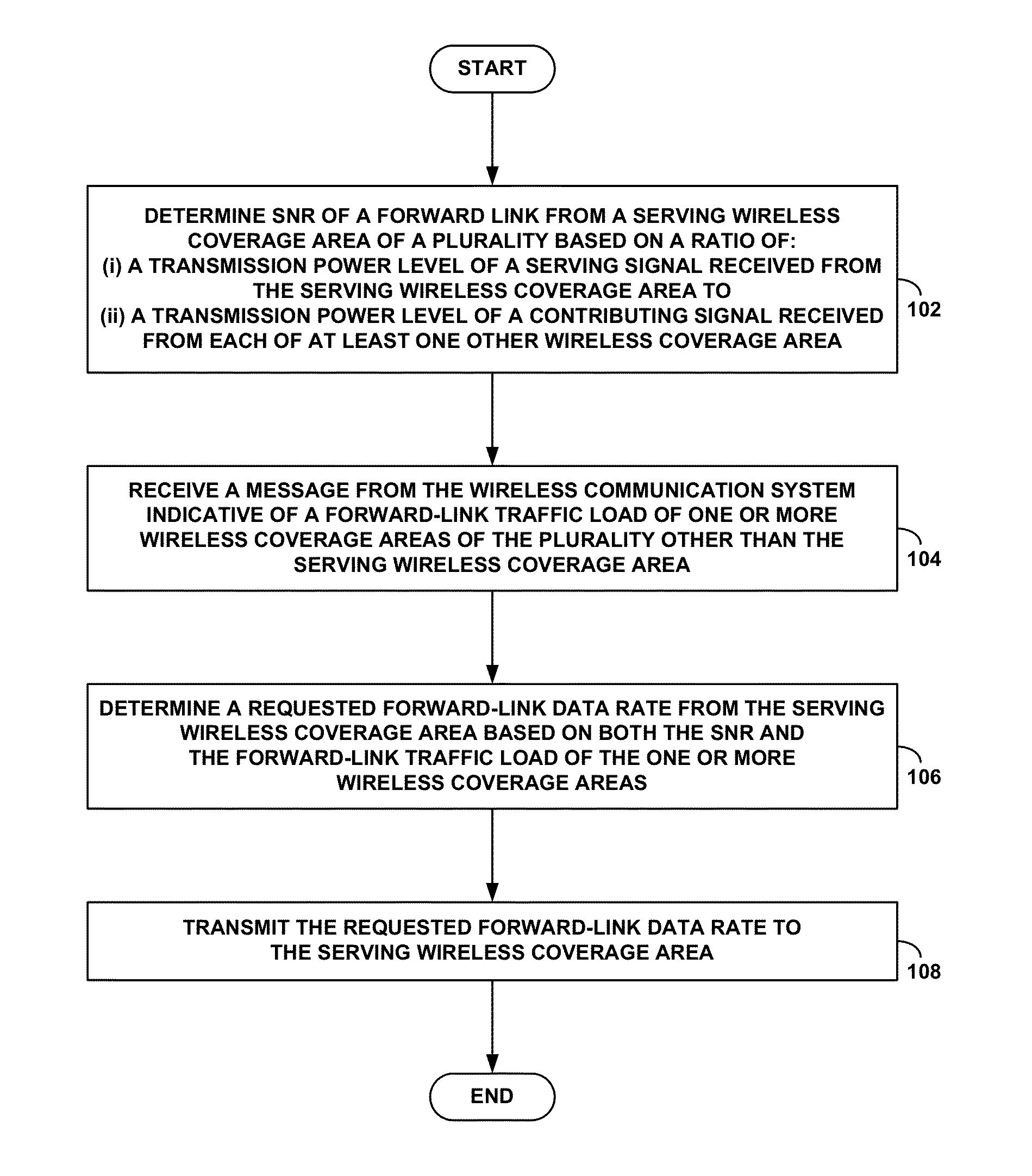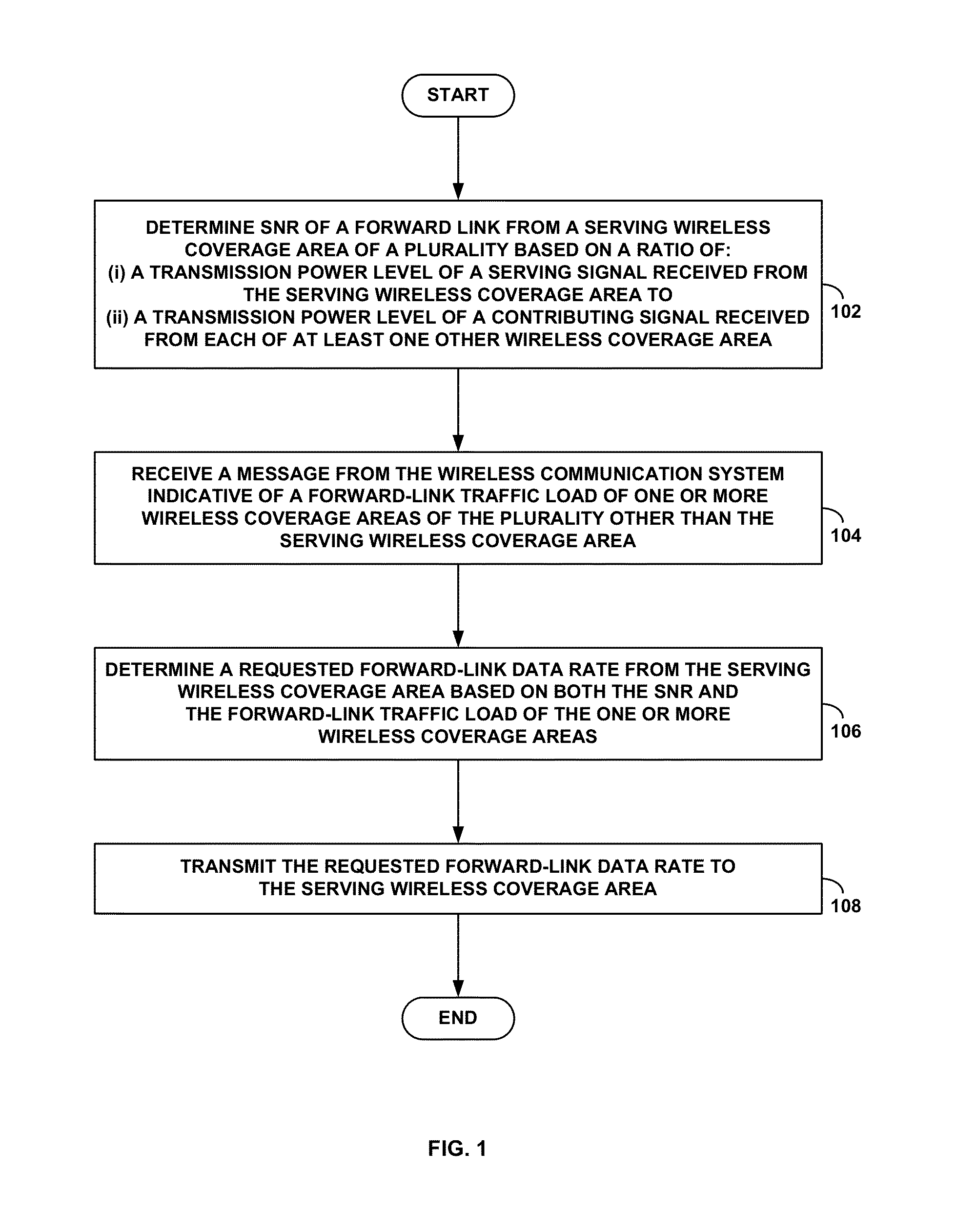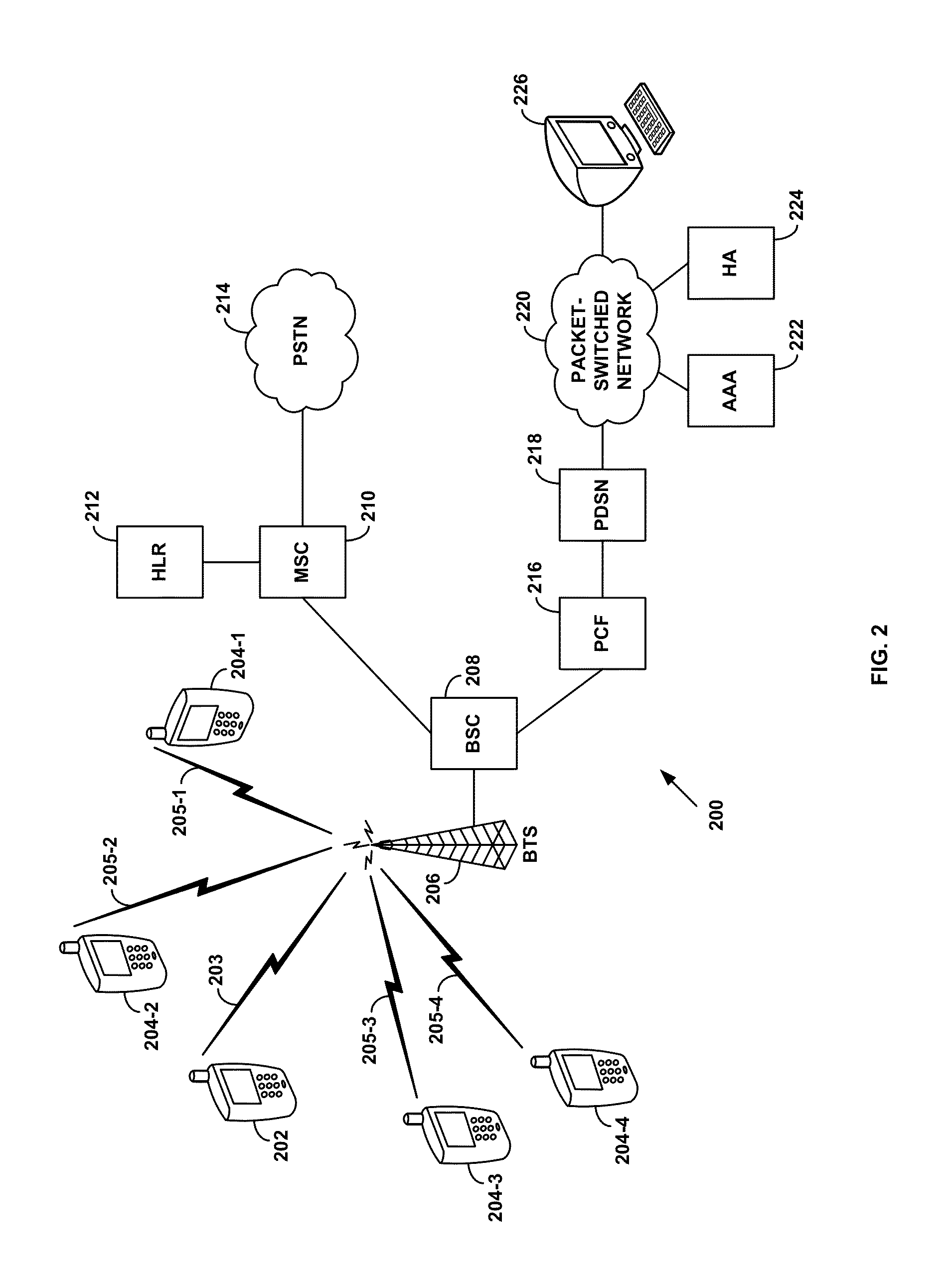Specification of forward-link rate control based on neighbor load
- Summary
- Abstract
- Description
- Claims
- Application Information
AI Technical Summary
Benefits of technology
Problems solved by technology
Method used
Image
Examples
example embodiment
4. Implementation of Example Embodiment
[0099]As described above, the example embodiment involves actions and operations carried out by both the access terminal and the base station (or sector). As such, the example embodiment may be considered as comprising a “client-side,” associated with the access terminal (or other client communication device), and a “system-side,” associated with the base station (or sector, or other RAN element). The example embodiment can be implemented as executable steps and operations of a client-side method carried out by an access terminal, and as executable steps and operations of a system-side method carried out by a base station (or BTS cell or sector).
[0100]Implementation of the example embodiment can further be considered as including means for carrying out both the client-side method and the system-side method. An example implementation of both the client-side method and means and the system-side method and means is described below. By way of examp...
PUM
 Login to View More
Login to View More Abstract
Description
Claims
Application Information
 Login to View More
Login to View More - R&D
- Intellectual Property
- Life Sciences
- Materials
- Tech Scout
- Unparalleled Data Quality
- Higher Quality Content
- 60% Fewer Hallucinations
Browse by: Latest US Patents, China's latest patents, Technical Efficacy Thesaurus, Application Domain, Technology Topic, Popular Technical Reports.
© 2025 PatSnap. All rights reserved.Legal|Privacy policy|Modern Slavery Act Transparency Statement|Sitemap|About US| Contact US: help@patsnap.com



